Skrambol Art for Kids A1 Pixel Art for Bigeners
INTRODUCTION TO PIXEL Art
Computer graphics and digital fine art as we know them today have a root, and that is pixel art.
Dorsum in the twenty-four hour period, there wasn't a 'Pixel Art' fashion because every art made on a reckoner needed to be pixel-by-pixel artwork.
As computers evolved, the capability to render images became more than advanced, enabling digital artists to create without the limitations of old hardware.
Creating art with these limitations in mind is the cadre of pixel art equally an art form.
While no longer a necessary arroyo, forcing yourself to create in the boundaries of an old technology or set up of techniques tin aid you as an
creative person.
Beneath are some examples of my exploration with pixel art.
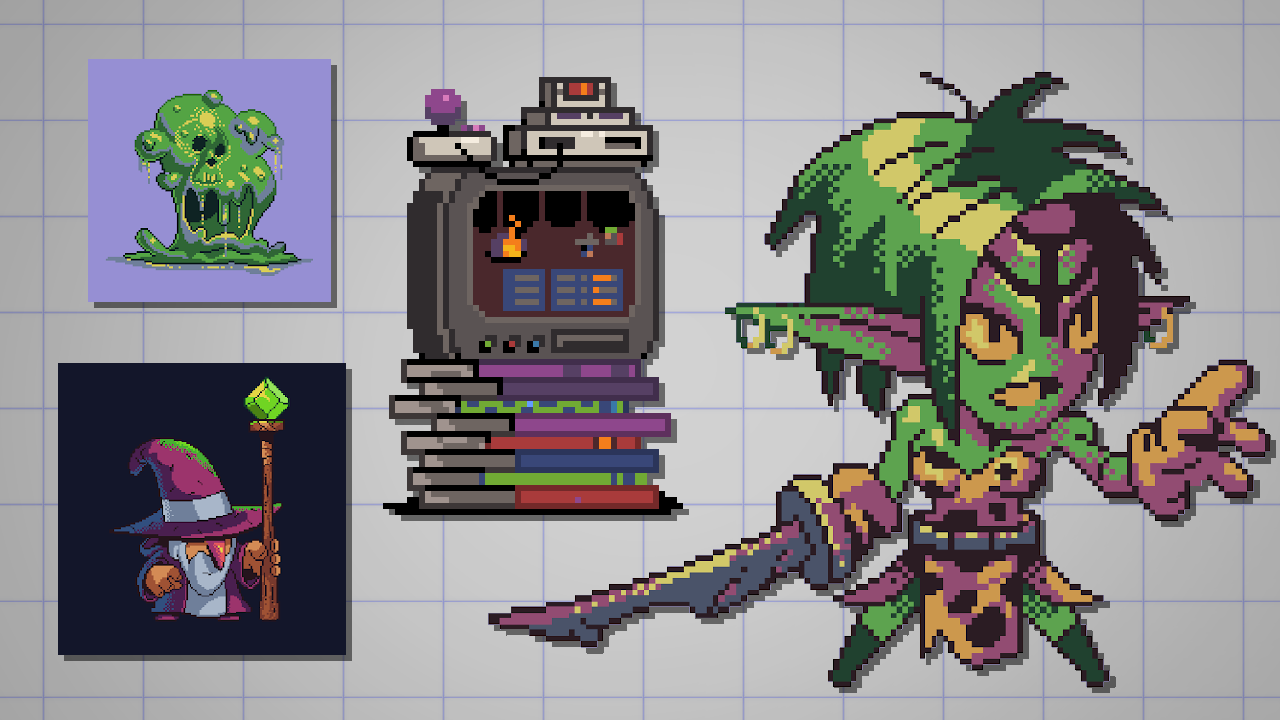
In this article, I'll highlight some characteristics, bones techniques and guidelines so you can start making your own pixel art.
All the information here tin can be practical to any 'style' and any software. And that's the beauty of this subject area.
The technical side of this art form is important, peculiarly if you want to make an homage of a video game.
Simply remember that you lot don't need to force yourself to create a 32×32 pixel size artwork with simply iii colors, if yous don't desire to.
Information technology's benign to respect the fundamentals and the techniques of old-school digital artists – but it's not obligatory to work like them.
LEARNING Past DOING
For this commodity, nosotros'll piece of work on an approachable claiming.
I want you to create a 64×64 pixel portrait.
That's it!
You can draw yourself, make a fanart or invent a character.
The goal is to create an artwork that can exist used used equally a social media avatar.
Start with a small (resolution) file size, and then the pixel unit is visible. In that location's no signal to making pixel art where the pixels aren't axiomatic.
SETTING Upwardly YOUR CANVAS
For this article, I'll be using Prune Studio Paint.
While there's great defended tools for making pixel fine art, yous can use any cartoon program to follow along.
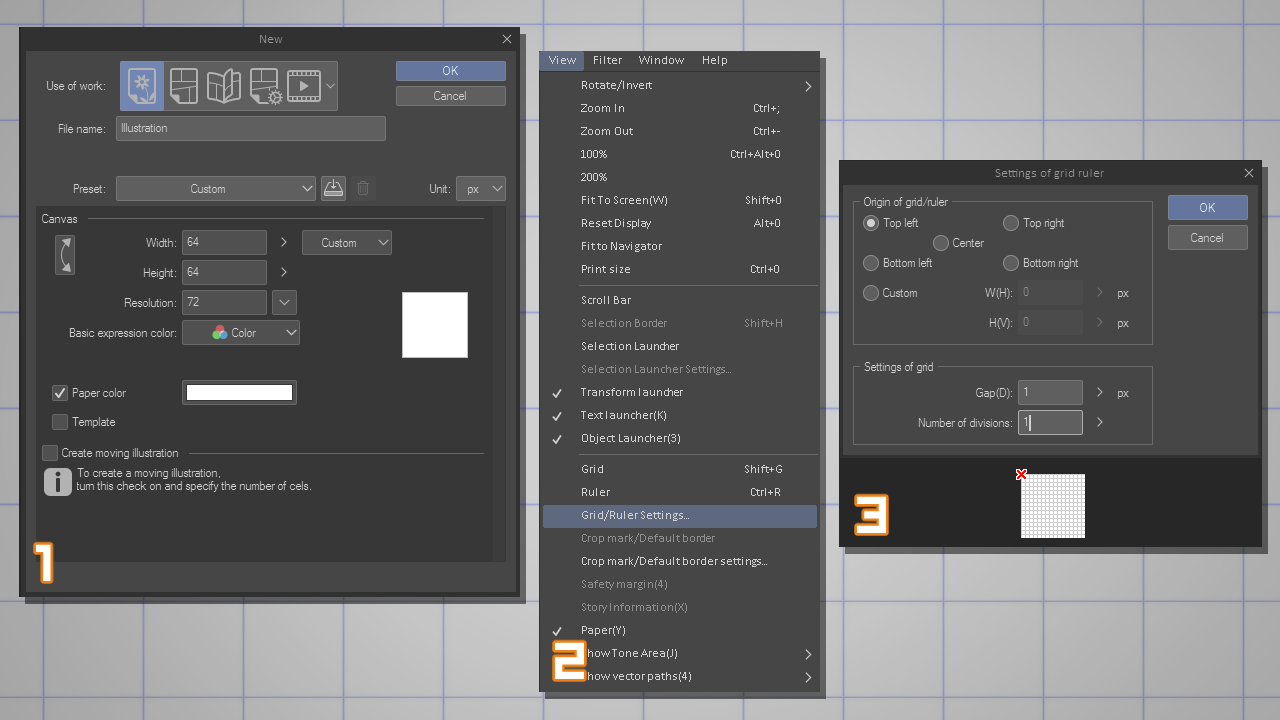
- Create a 64×64 pixel document (ane);
- Go to View > Filigree/Ruler Settings (ii);
- Configure as the following so y'all can see a filigree with every single pixel. You can plow the grid on/off anytime using the Shift+G shortcut. (3);
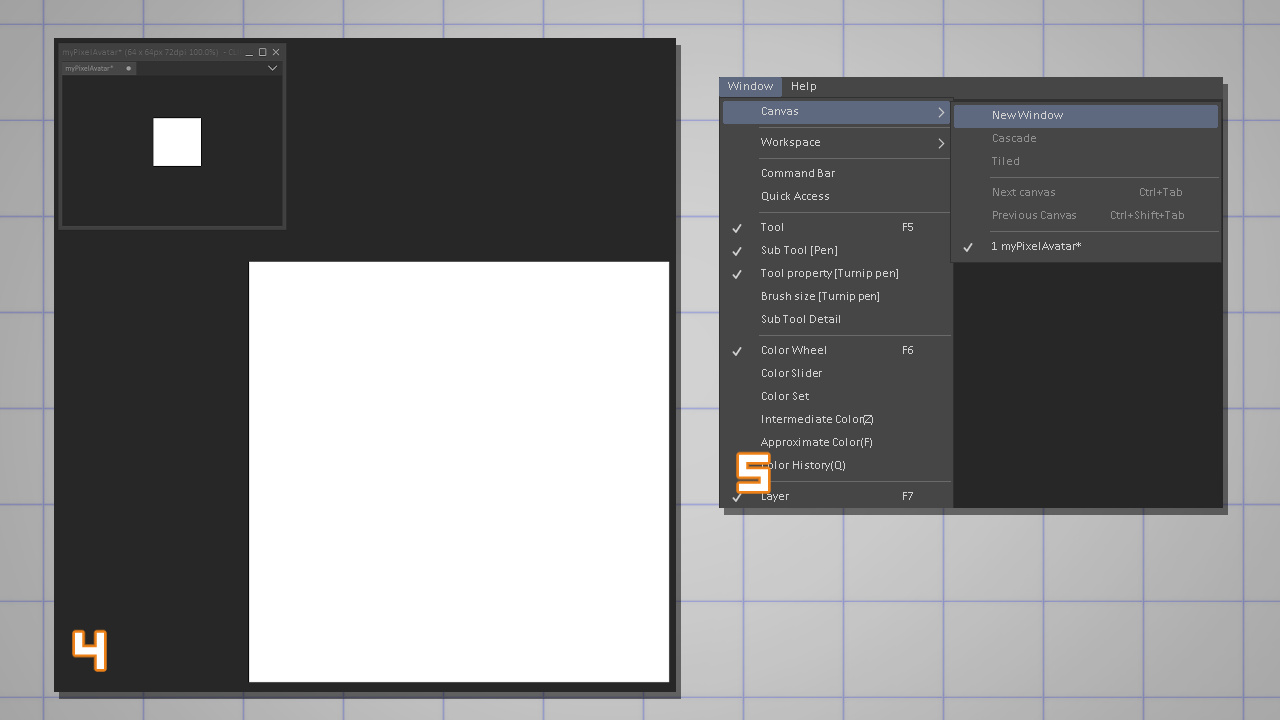
A expert practice for working with pixel art is getting used to drawing zoomed while keeping an eye on the actual-size artwork (four);
To create a secondary view of your electric current canvas, go to Window > Sheet > New Window and open up a new example of the current canvas.
Set up information technology to 100% and identify in your workspace (v).
CREATING THE PIXEL Fine art TOOLS
Time to introduce a basic concept.
Pixel art does not go forth with automated anti-aliasing.
Anti-aliasing is a useful algorithm that smooths edges of a shape.
This is made by adding an actress row of pixels closest to the aliased edge.
As you can see in the instance, the anti-aliased edge (seven) has an automatic slope of pixels to give the shape a smoother profile.
The aliased edge (6) is what we're looking for when creating pixel art. Later, we can soften the edges by adding anti-aliasing by mitt (manually).
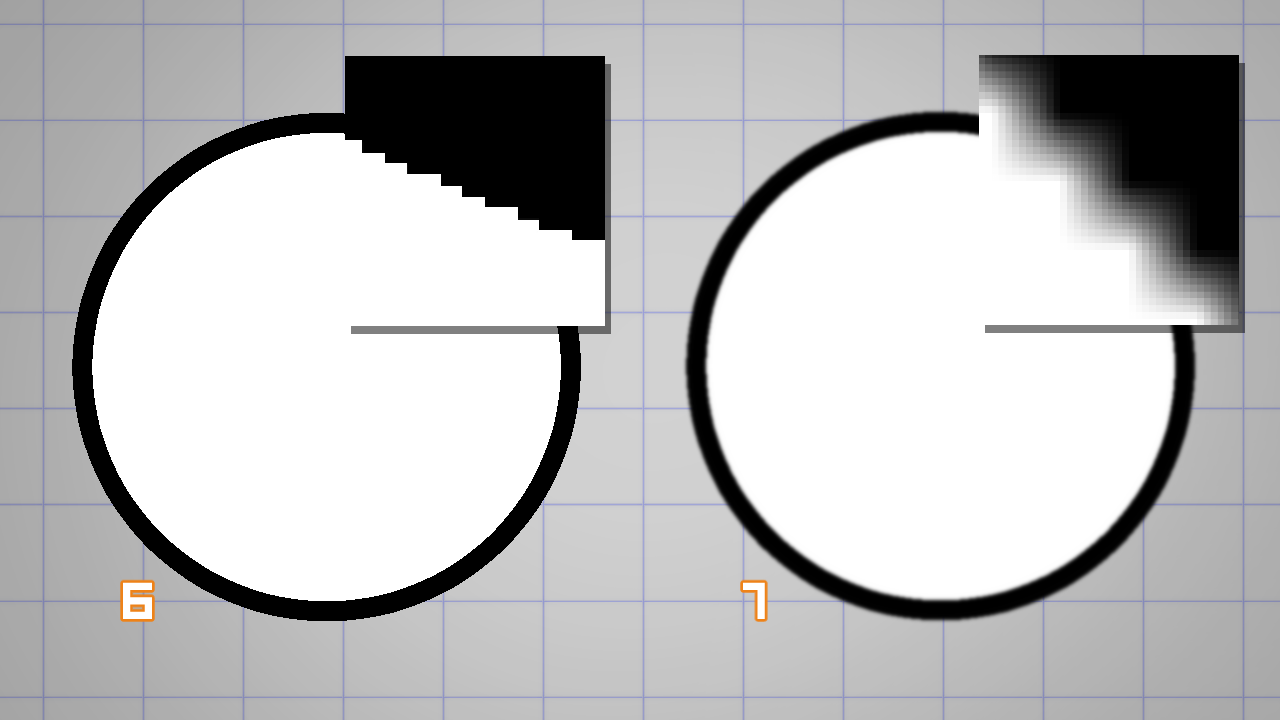
A rule-of-thumb when using whatever software to create pixel fine art is to disable the anti-aliasing setting in brushes, tools and transformations.
In Prune Studio Paint you have to turn off anti-aliasing in:
- brushes (8);
- tools like Selection, Fill, Text, eg. (ix);
- and during any transformation using Edit > Transform (10);
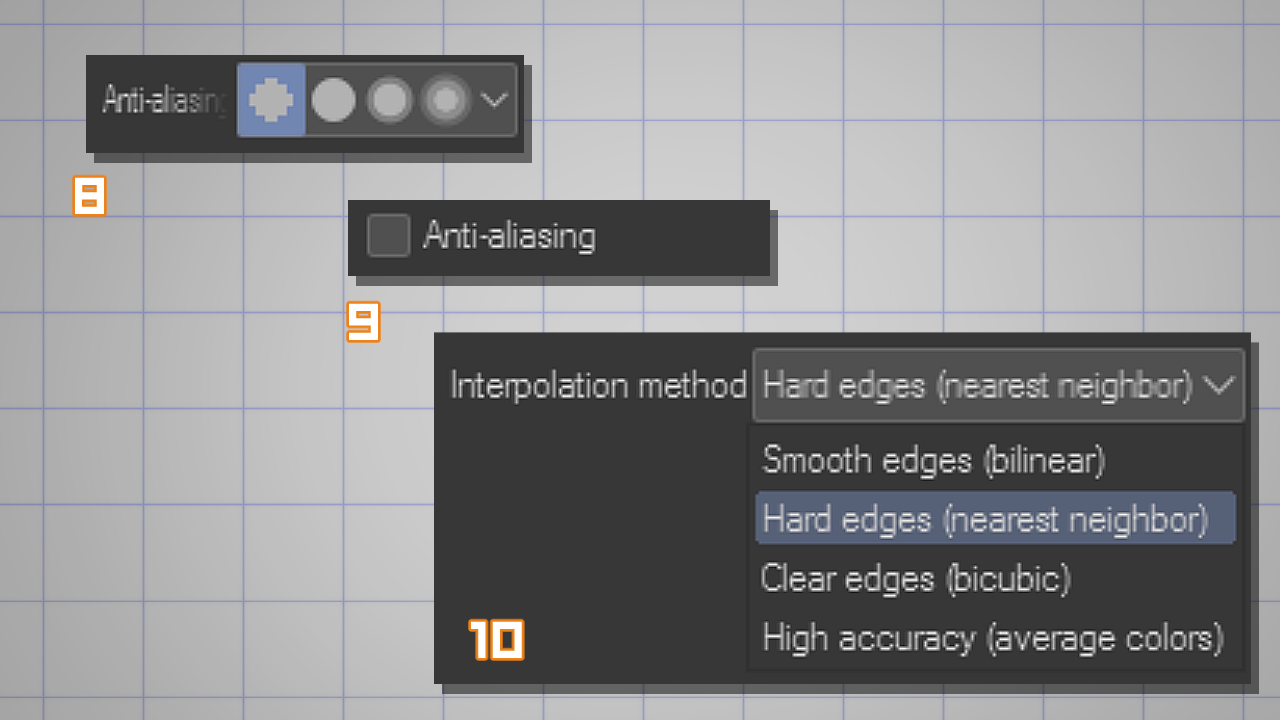
In Clip Studio Paint yous already take a pixel fine art pen. It's called 'Dot Pen' in the Marker category (11).
This is the simplest drawing brush available. It has a stock-still i-pixel size, anti-aliasing turned off, and no choice for stabilization or colour mixing.
I suggest y'all follow along this tutorial using this brush only.
Later in the game, y'all can duplicate whatsoever of your 'common' brushes and utilize information technology for pixel fine art (as long you reduce brush size to lower values and disable anti-aliasing).
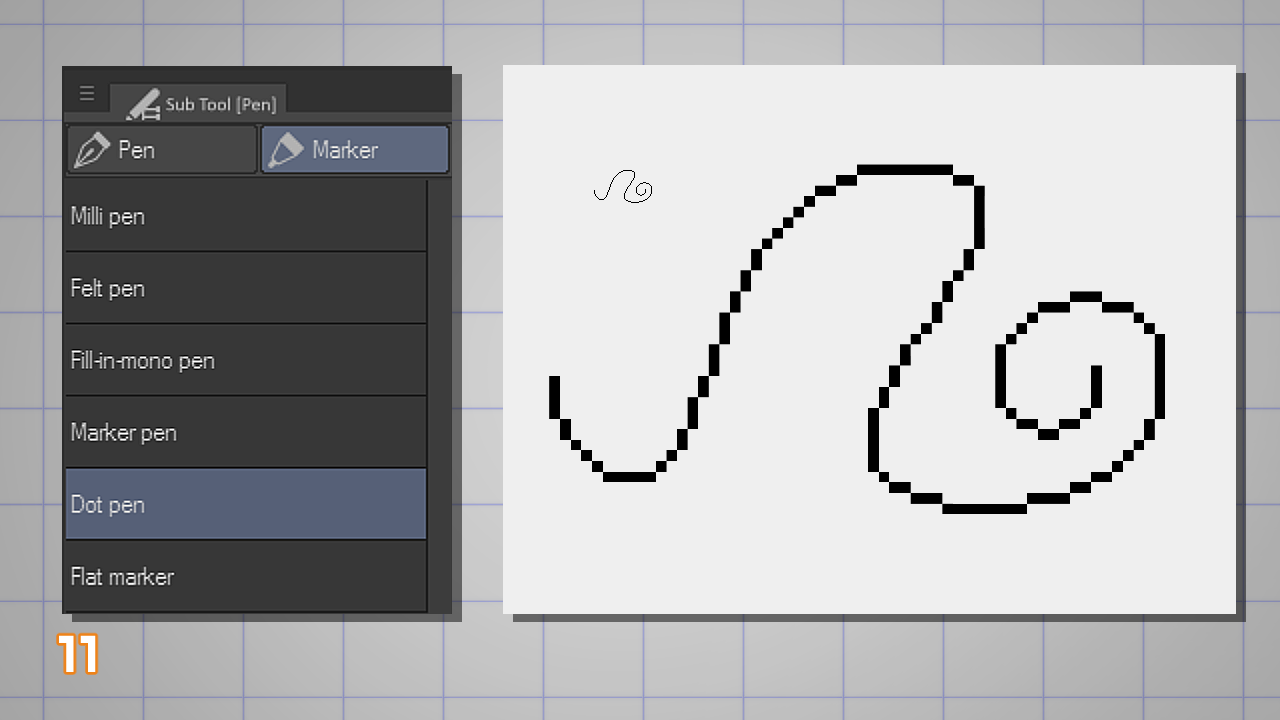
Cartoon THE LINEART
Since this volition exist a front-facing portrait, I'll start the drawing using the Symmetrical Ruler (12);
Place the Symmetrical Ruler on the Canvas and, to make sure it's on the dead-eye, utilize the Object tool to select information technology and input values manually (thirteen);
In this case I changed the Heart X and Center Y values to 32, which is half of my total canvas size (64 pixels).
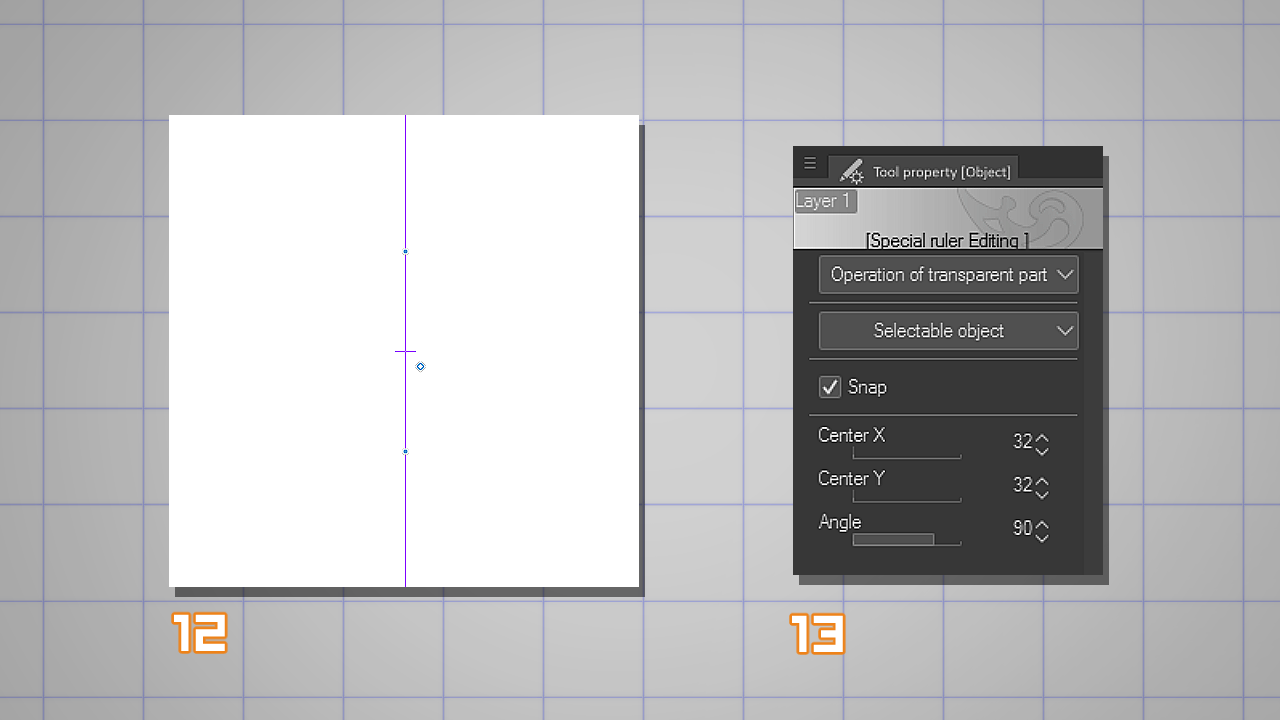
Now, select your Dot Pen again and start drawing.
Since this brush tin can't be resized, it's a good idea to zoom in on the canvas yous're drawing (xv) and employ the duplicate view as a reference (14).
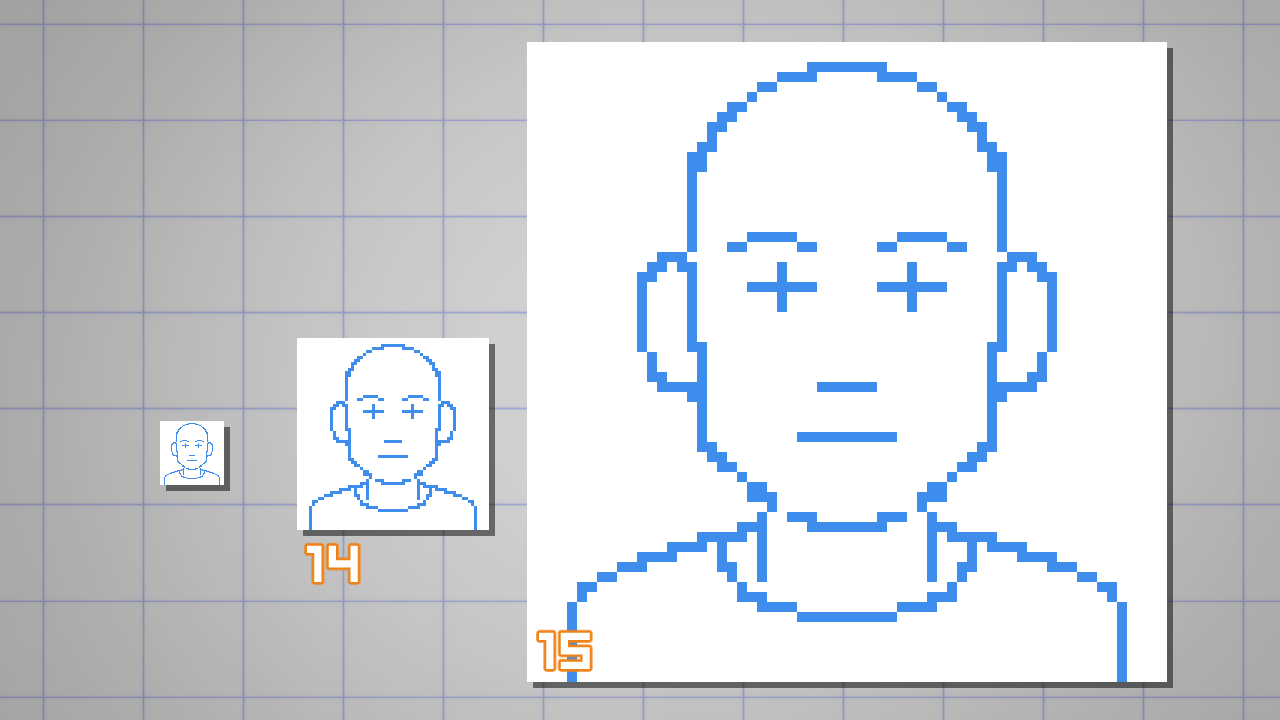
I started my portrait drawing a initial sketch to find the construction of the caput (sixteen) and then I started adding details (17).
There'due south no demand to utilize a blue color. I only prefer it because it helps my brain understand that I'chiliad creating a crude for my final drawing.
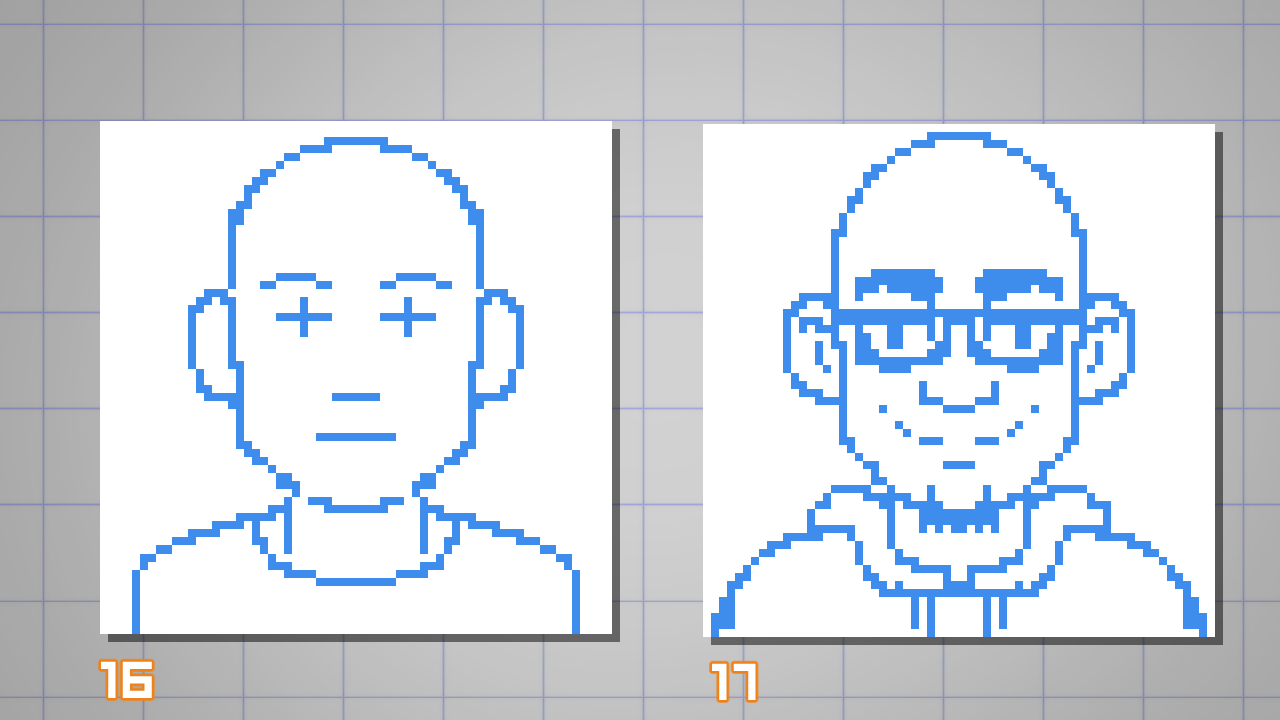
If y'all're done with the sketch you can keep with the linework.
Before adding the final lines, permit me prove you a simple technique for drawing lines and curves in pixel art.
In the example below, the linework (xviii) doesn't await smoothen because there'south a lot of duplicated pixels where it should be a single pixel line.
Yous can ready those 'doubles' (information technology's a term) past removing whatever adjacent pixels on the curve. In the example (nineteen), I removed all pixels marked in ruby.
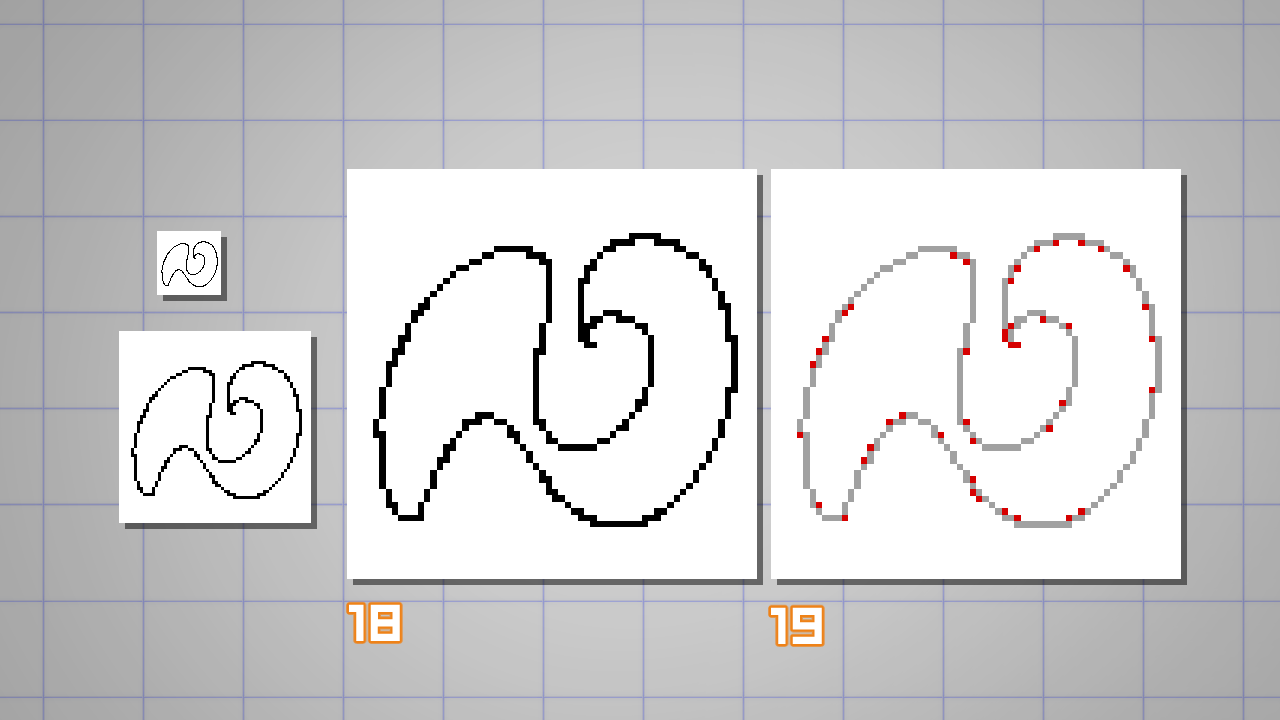
I suggest you to return to your sketch and look out for those 'doubles' to clean your linework.
Practice non worry if the curves don't feel right. Just remove the unwanted pixels.
TIP: if you lot demand to erase a pixel, you can simply switch to the transparent color (I have my shortcut set up to 10);
In the example below you lot can see the difference of the initial sketch (20) and the cleaned-up version (21).
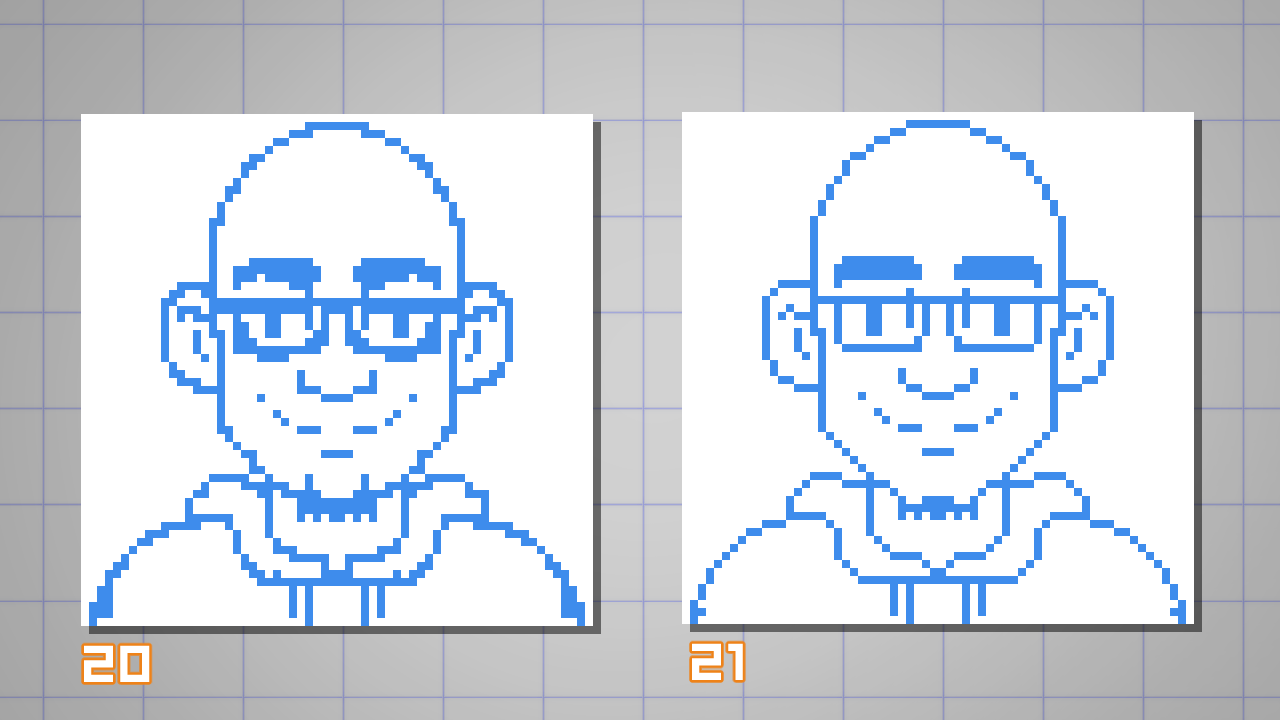
Prepare for some other technique?
Let's showtime fixing the drawing and adjusting some curves.
Seeing the case below (22), you can notice the distribution and spacing of pixels are not following a logical progression. (eg.: iii, 2, 1, iv…)
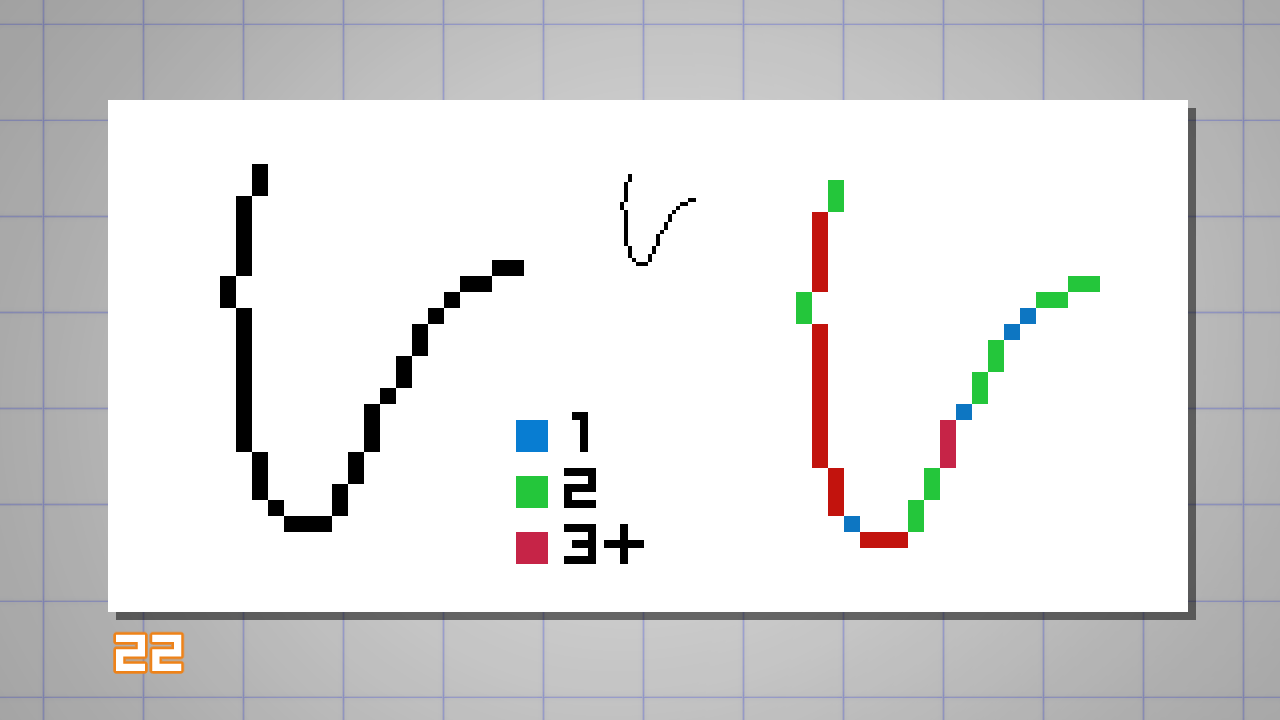
While on this improved version (23), you can encounter a better progression of pixels to create the curve. (eg.: 1, ii, 2, iii…)
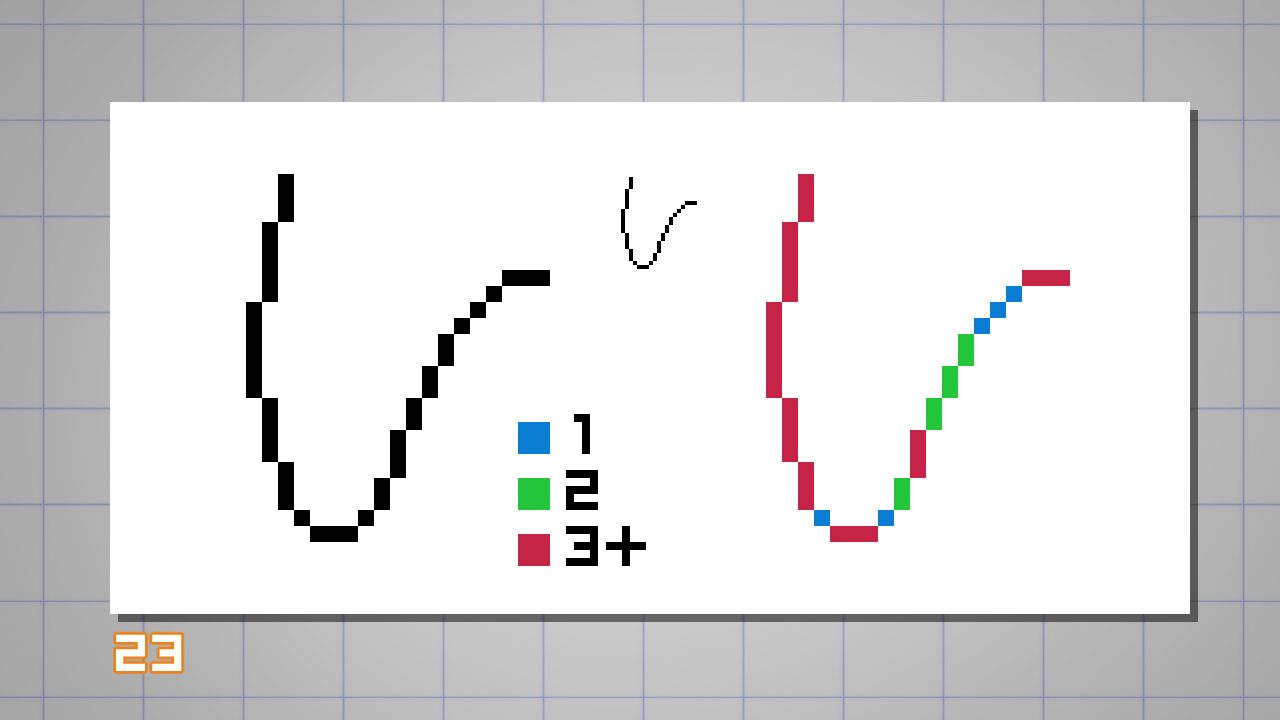
With that noesis, I propose you to attempt the following practise earlier continuing on your cartoon:
Endeavour to draw some random lines and curves with the two concepts you lot just learned so far: remove the doubles and maintaining the 'pixel progression'.
This volition give you lot a solid gasp in how to contour shapes in pixel art.
Below is my final linework (25).
I did some pocket-sized adjustments on the proportions and curves, and removed some unnecessary pixels to make the face more readable.
Take some fourth dimension to compare with the original version (24) and endeavour to notice where I practical the techniques.
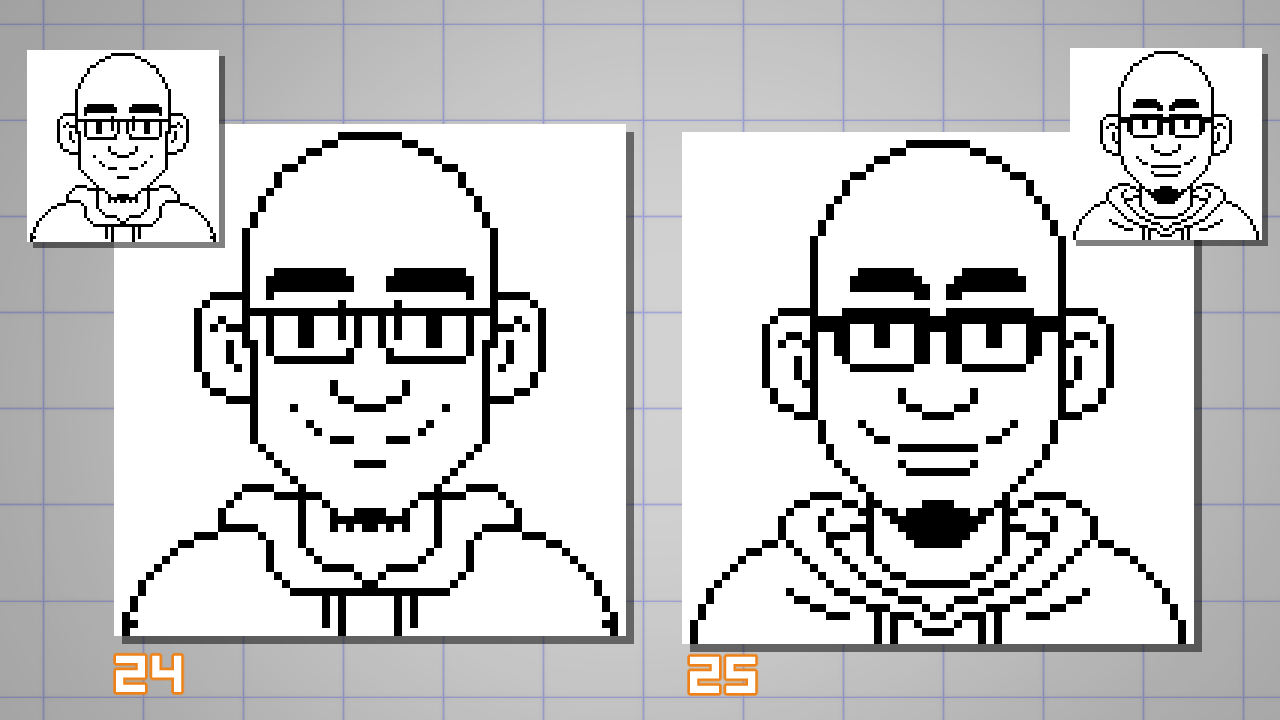
COLORING TIME
The number of colors used on a sprite (term used to describe an object in game development), depends by how much you want to stay shut to a specific limitation of an old engineering.
While not necessary, yous tin learn a lot about pixel fine art by limiting yourself to a minor amount of colors to cull.
For now I suggest you start with a simple color palette. As a starting point, you can apply the 56 colors of the palette used past the NES (Nintendo Entertainment System) videogame panel (26).
The color and tone choices on this palette are non perfect, but it provides a expert starting indicate.
In the examples below yous have the PC-98 computer colour palette (27) and a personal one I built in the past (28);
Later y'all can starting time building your own palette, but always recall to keep it tight and simple.
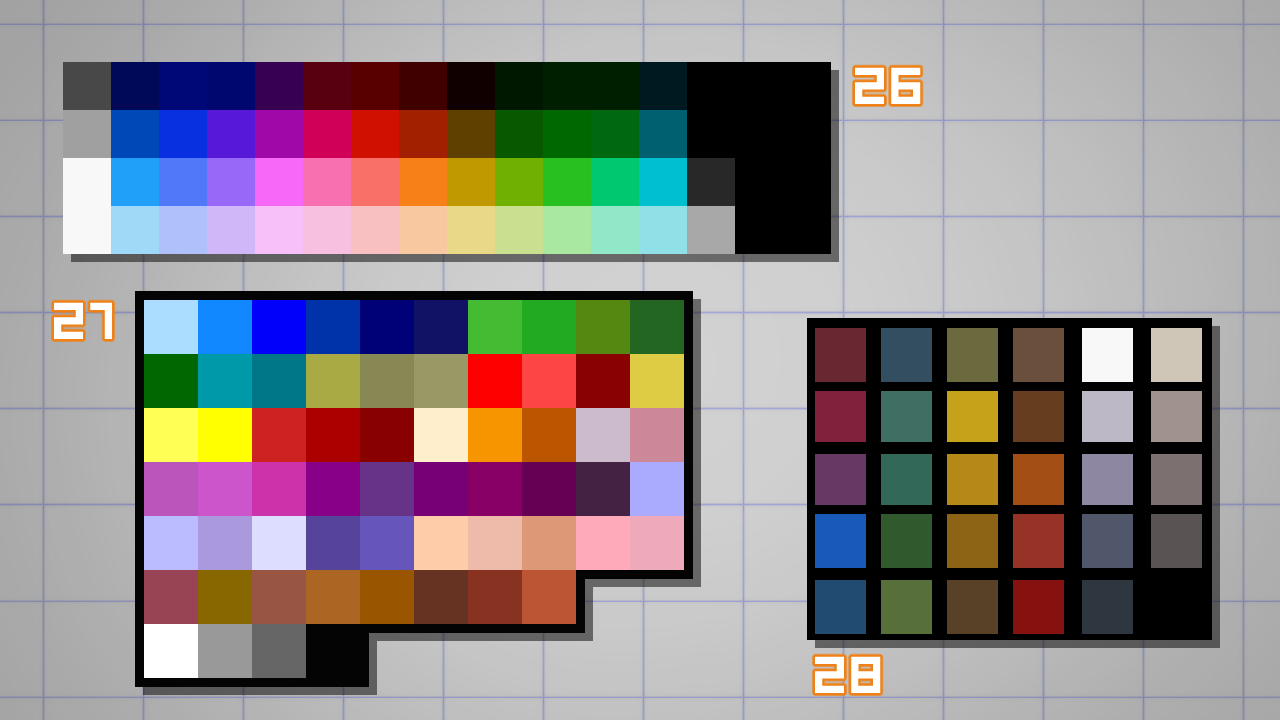
I start by filling my lines with some base colors (flatting).
I'm starting with five initial colors, including the black linework to paint this portrait (29).
On this stage, recall to configure your Automobile Select and Fill tools for the pixel art workflow, disabling Area Scaling and Anti-aliasing (xxx).

To shade (add together shadows) the skin colour on the portrait, you lot don't demand to only use the darker value of a specific colour;
I can potentially employ any color available equally long the values read correctly.
Here'south a tip – Create a new layer on meridian of your layer stack, fill it with black and prepare the layer fashion to Color.
Now you can use this layer to bank check the value human relationship of your colors (32).
In the example below yous can see how I managed to use the quondam background color (regal) as the shade color of my brown pare (31). I prefer to go with a blackness background to save one color…
Once again, I don't need to – but I'd like to exercise these limitations imposed by the NES color palette.
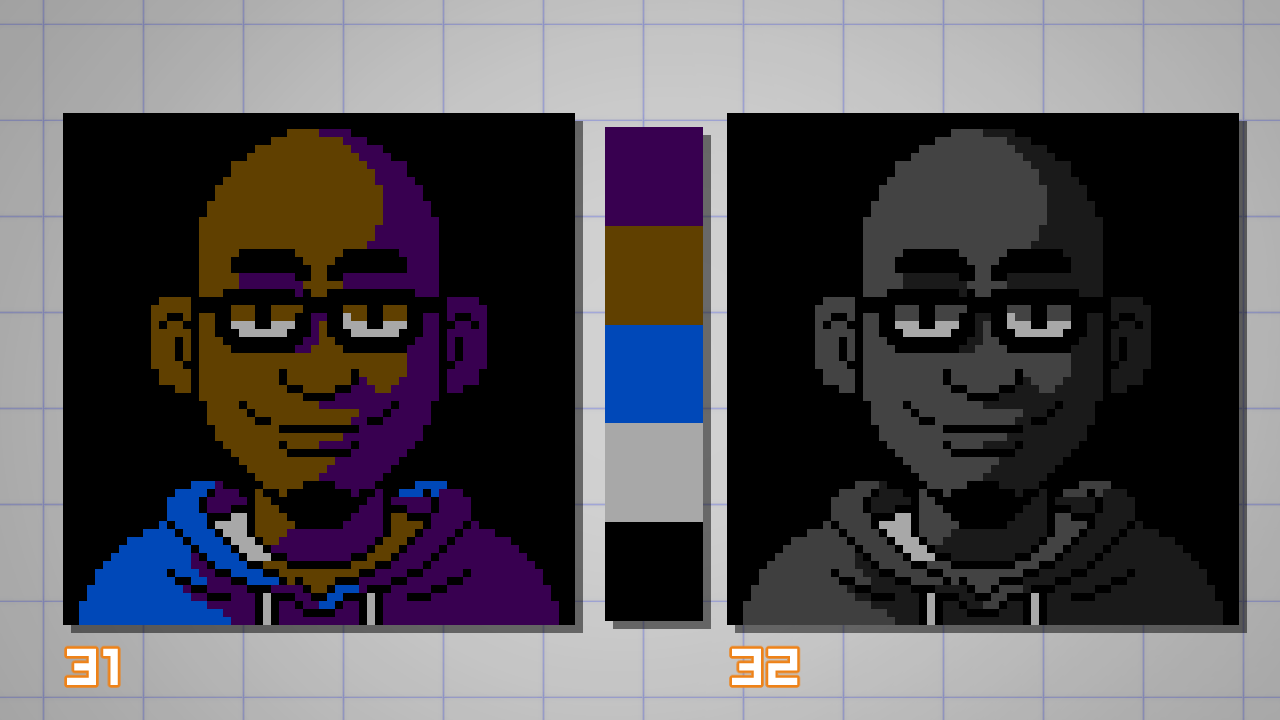
For the highlights on the skin and glasses (33), I don't needed to innovate any new colors because, while checking the grayscale values (34),
I noticed the colour of the t-shirt could be used for that.
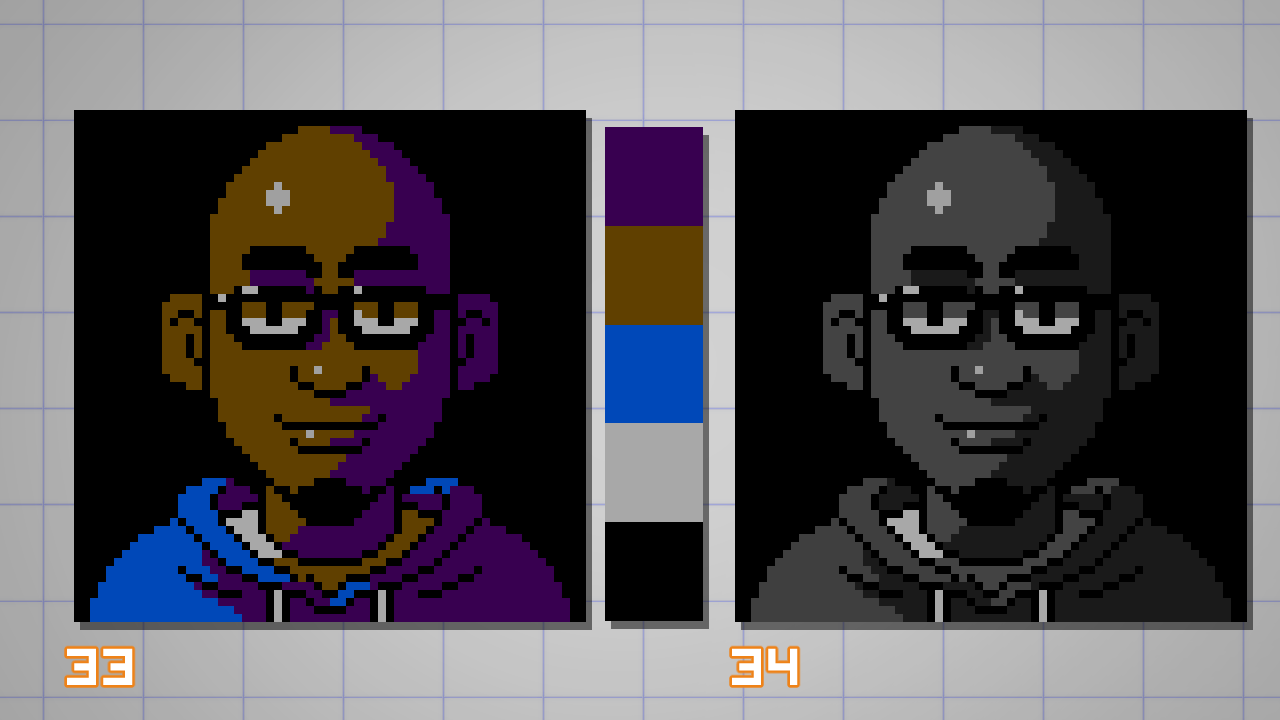
I wanted to add some manual anti-aliasing to smooth the edge betwixt the lit and shadowed areas of the skin (36).
Using the NES palette merely, I could not find colors that I could use to create this gradient transition.
Then here's where I abased the 'virtual limitations' in favor of the artwork.
In the example I added 2 new colours (37), and then I tin can add more details to the shading.
I can't stress this plenty, but it's actually important that yous make these decisions while looking the artwork through the real, non zoomed-in, canvas size (35).
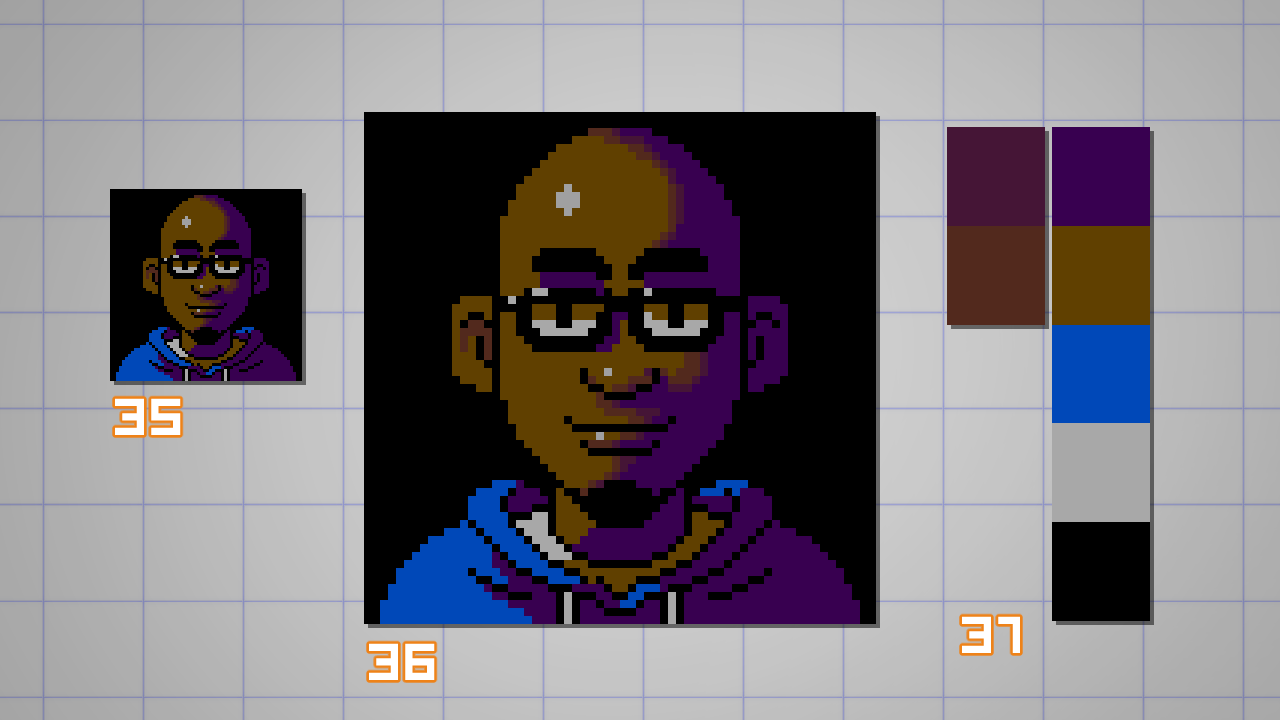
Using the two new extra colors, I increased the rendering on the face adding more book, wrinkles ('cause I'm getting old) and softening some shadows on the lit side of the portrait (38).
On the bluish jacket, I decided to use the dithering technique to create the sensation of a gradient without adding colors (forty).
By breaking upwardly the solid transitions on a checkerboard pattern I tin make the illusion of an inbetween color (39).
Dithering is an advanced technique and this is simply a basic usage for information technology.
As y'all tin can see, the effect creates a textural issue that can exist a problem if used on pare or shine surfaces.
I plant it appropriate to use in the jacket (made of cloth), because I tin can benefit from the rough texture.
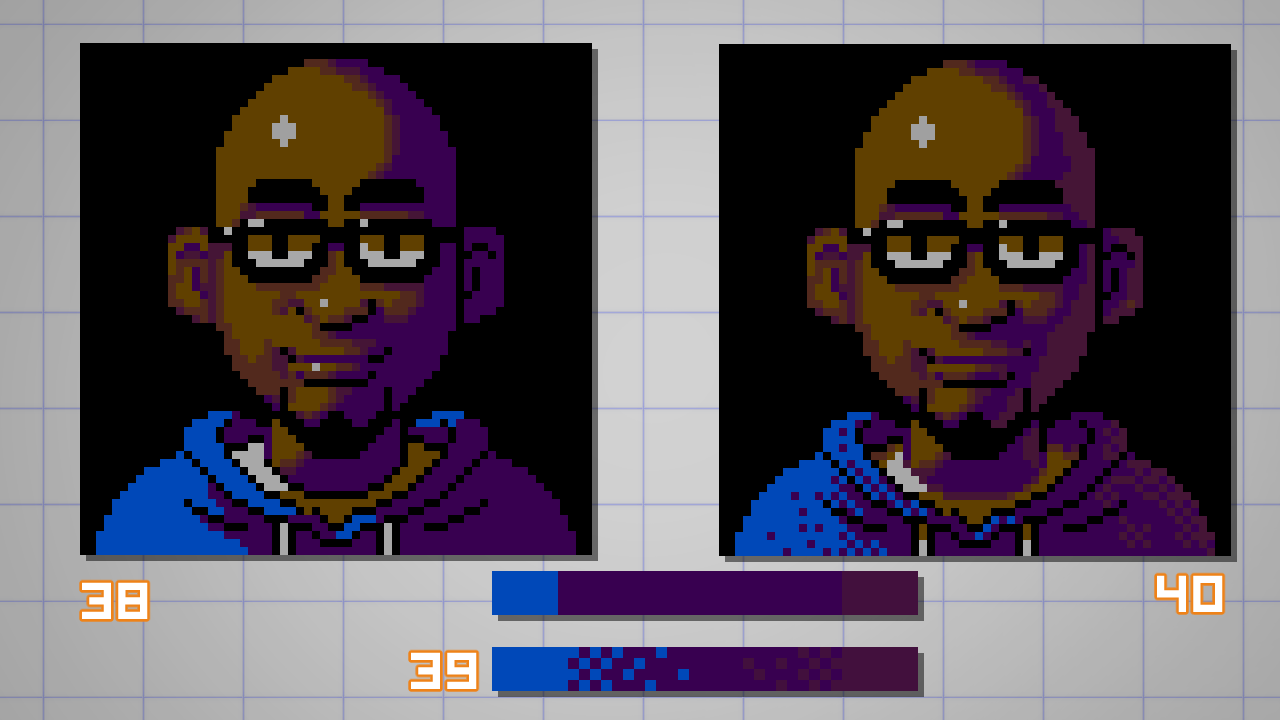
Afterwards some tweaking, I managed to fully paint the portrait.
I'1000 very happy with the final result because I could fit a lot of details for a 64×64 pixel size artwork with only 7 colors.
ps.: I too had pixels and colors enough to fix those weird-looking cartoony eyes. 10-D
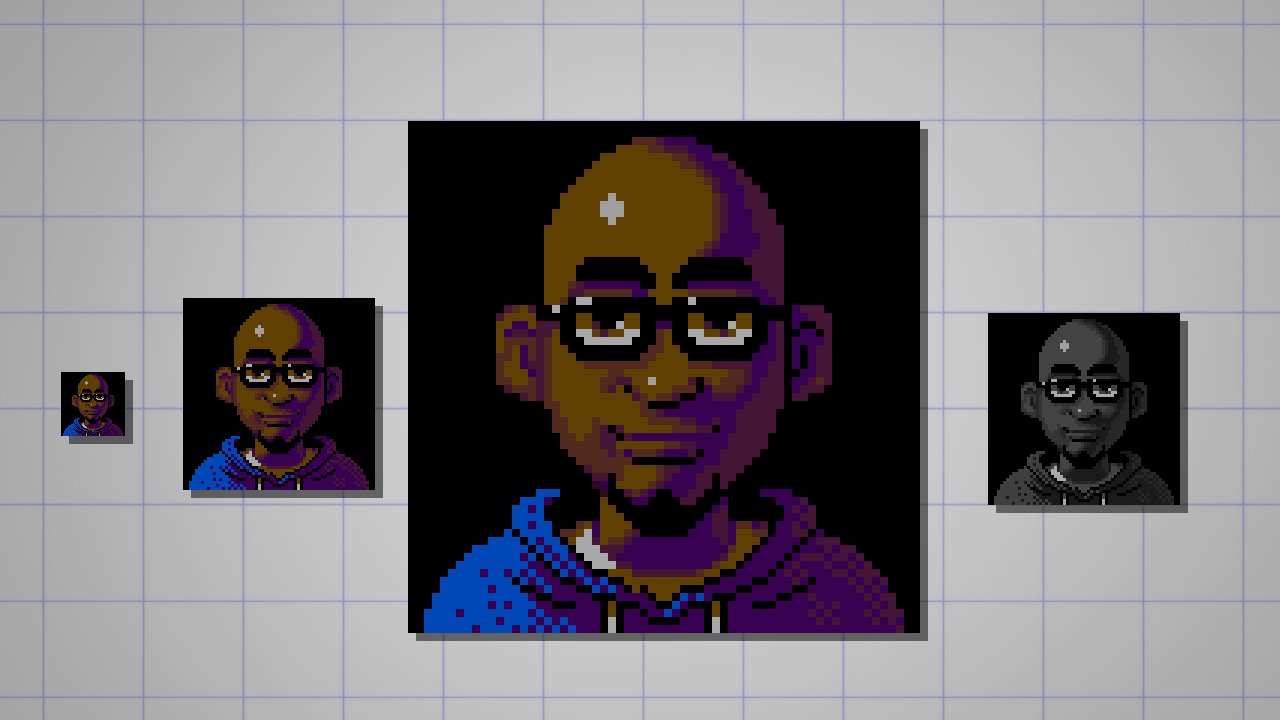
EXPORTING
Last, just not least…
When saving and exporting pixel art, employ the GIF or PNG format.
Avert using the JPEG format, peculiarly with whatever level of compression.
This will destroy all the love and care you used to create your pixel art.
Look at the examples below: a 99% compressed JPEG (41) may await ok from a distance, just it adds some not-wanted colors.
A 80% compressed version (42) will brand whatsoever pixel artist bleed. So delight, don't practise that. 🙂
When it comes to posting on social media, you have to deal with the automatic-compression of the platform.
For Instagram, yous'll accept no option because the organization automatically converts and resizes the image to a low-quality jpeg.
On Twitter, you'll have a sharper, nigh perfect image if the exported file is 506 pixels wide in PNG format.
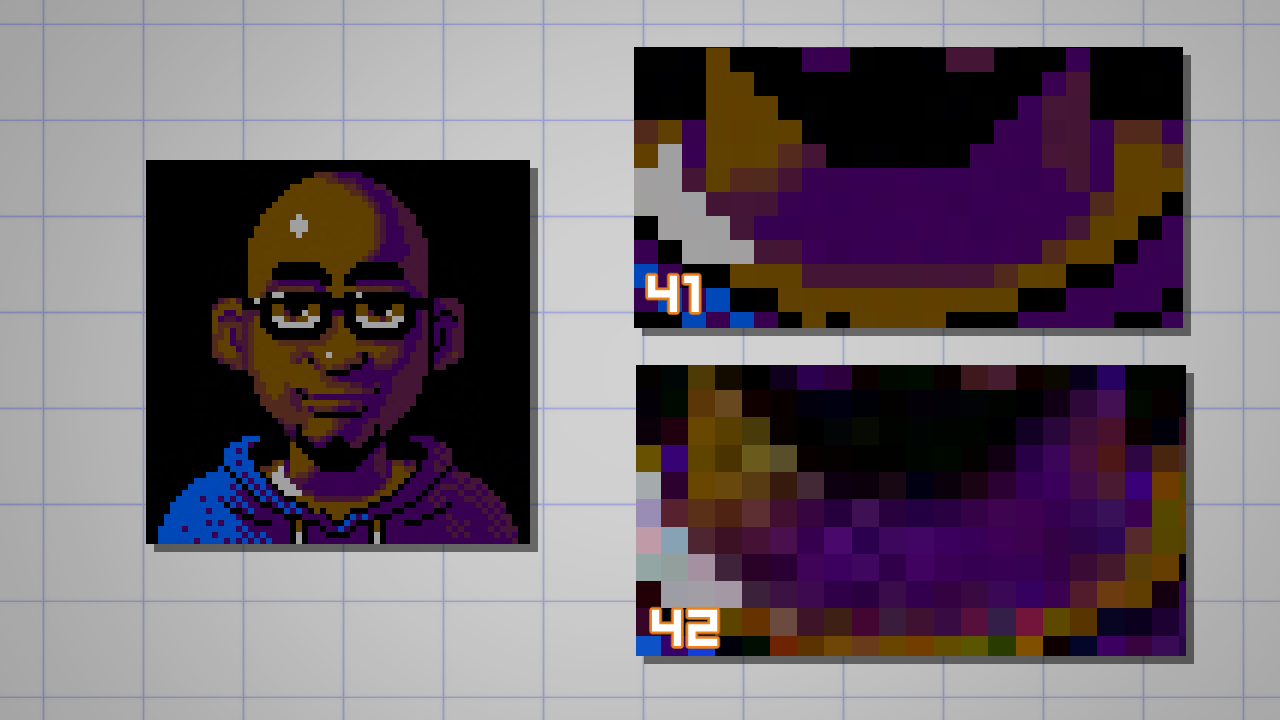
That'south it.
I hope you enjoyed this tutorial and too hope you managed to create your first pixel art portrait.
Below you tin observe my minuscule, yet incredible, piece of art. 🙂

If you create yours, please let me know.
– dado
Artist Profile
Hi. I'm Dado (Dadotronic) Almeida and I depict and pigment 90's-videogame-inspired fine art. As a freelancer artist I create concept and product art for games and animation.My indie career is devoted to personal projects like Claws and Tusks (comic) and artwork that I brand for fun or commissions. I also like to teach and share my discoveries about digital fine art, computer graphics, and mental health for artists.
https://world wide web.dadoalmeida.com/
https://twitter.com/dadotronic
https://www.artstation.com/dadotronic
Source: https://www.clipstudio.net/how-to-draw/archives/161082
0 Response to "Skrambol Art for Kids A1 Pixel Art for Bigeners"
Post a Comment